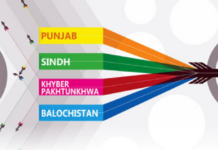The government’s latest attempt to tame the beast that is circular debt looks, on paper, like a genuine breakthrough: a cheaper pile of money, a clearer payment cascade, and – if all goes to plan – breathing room for the fuel suppliers and power producers that keep the lights on. Yet talk to anyone who has covered this saga over the past decade and a half, and you will hear a familiar refrain. The arithmetic that creates circular debt is still very much intact. The state is rearranging liabilities to buy time, not solving the pricing, collection, and cost‑recovery problem that causes arrears to spiral.
Below, we unpack the transaction now on the table, trace the origins and evolution of circular debt since 2008, and examine why – despite real near‑term relief – this fix will not end the cycle. We also explore how the energy transition at the consumer end, especially the rapid pivot to rooftop solar, may sharpen the challenge by eroding the utility revenue base even as capacity charges remain fixed.
What the new transaction actually does: cheaper money and a cleaner queue
The government has orchestrated a large refinancing of the power sector’s arrears, centred on a Rs1.225 trillion syndicated bank facility priced at KIBOR minus 0.9%. The facility will replace a medley of higher‑cost obligations that have accumulated over years: independent power producers’ (IPPs) penal late‑payment charges – often referenced to 3‑month KIBOR plus 200–450 basis points – and interest on loans parked at Power Holding (Pvt) Ltd (PHPL), historically levied around KIBOR + 2%. By swapping this stack of expensive liabilities for a single, cheaper instrument, the authorities expect to shave roughly 1.5–5% off the implied finance cost on the relevant portion of the debt.
To read the full article, subscribe and support independent business journalism in Pakistan
The content in this publication is expensive to produce. But unlike other journalistic outfits, business publications have to cover the very organizations that directly give them advertisements. Hence, this large source of revenue, which is the lifeblood of other media houses, is severely compromised on account of Profit’s no-compromise policy when it comes to our reporting. No wonder, Profit has lost multiple ad deals, worth tens of millions of rupees, due to stories that held big businesses to account.
Hence, for our work to continue unfettered, it must be supported by discerning readers who know the value of quality business journalism, not just for the economy but for the society as a whole.
























